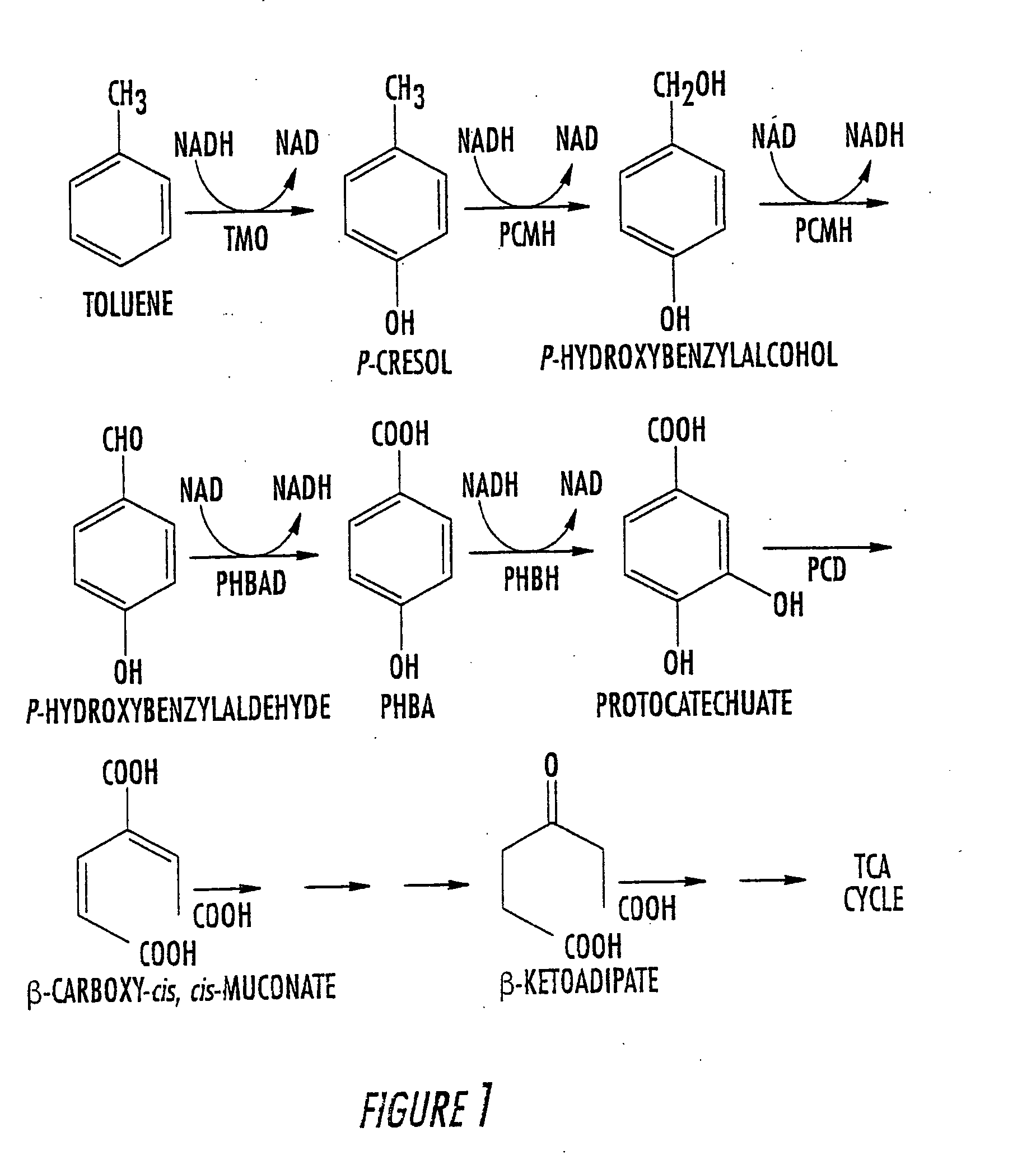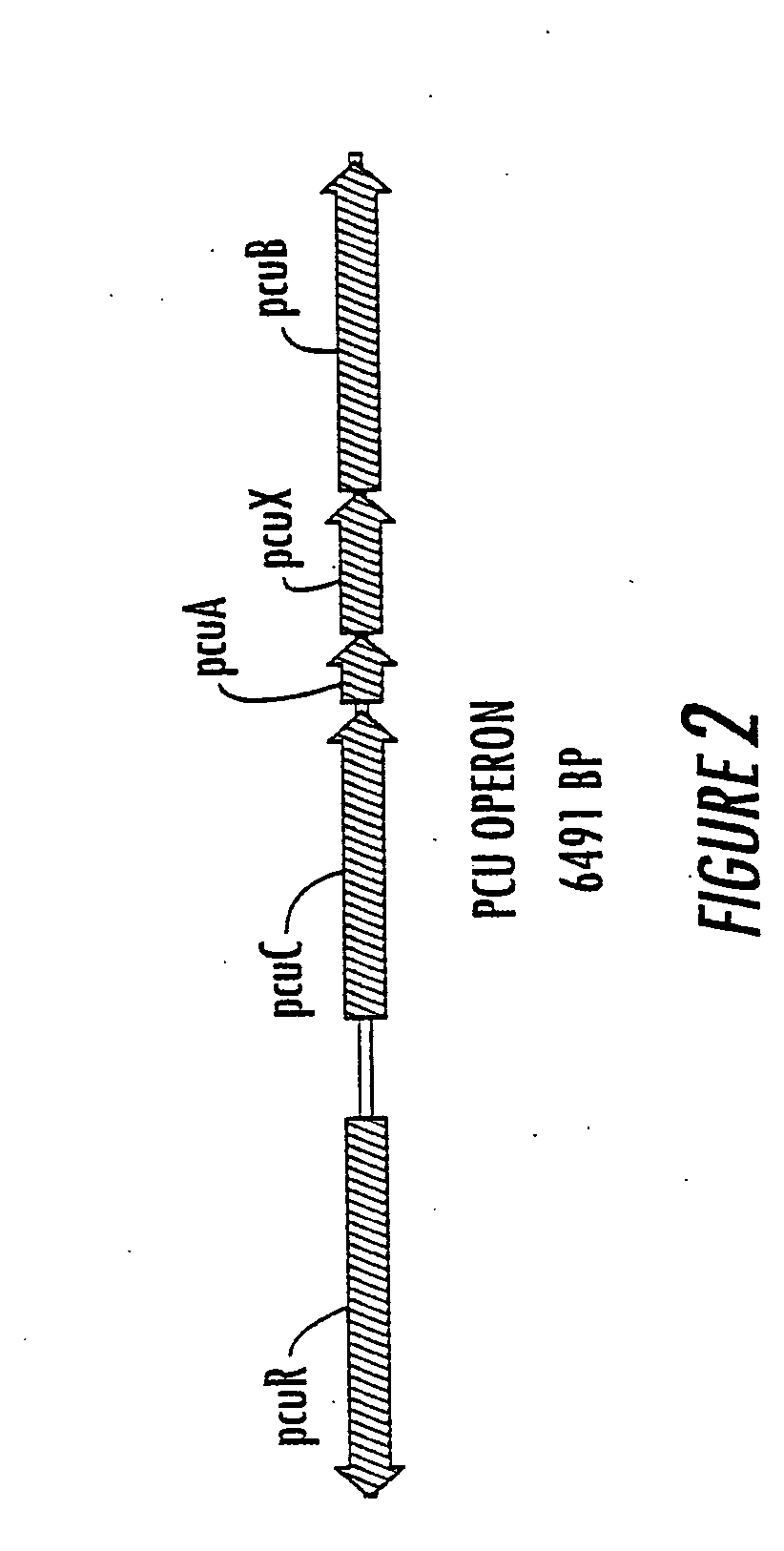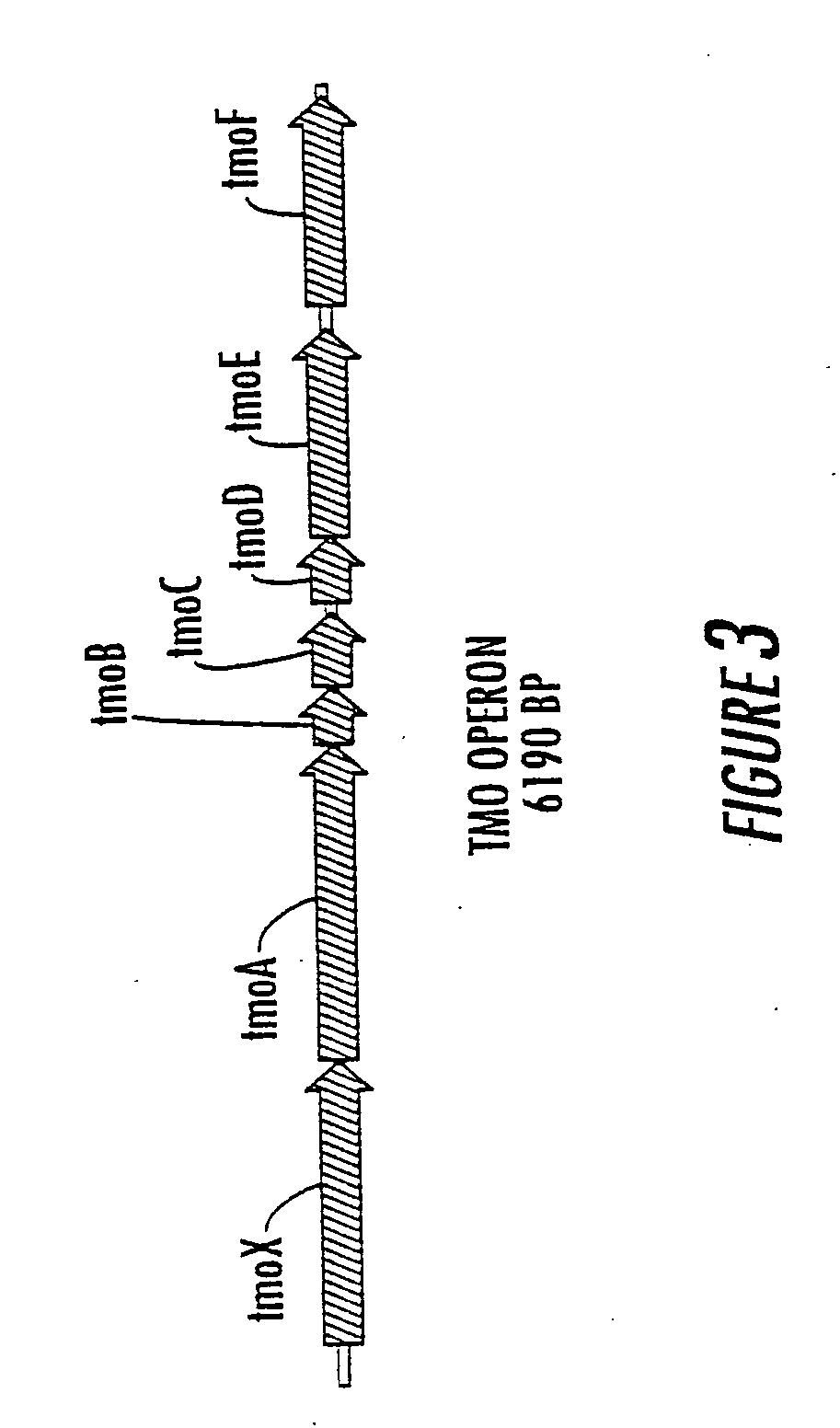Method for the production of p-hydroxybenzoate in species of Pseudomonas and agrobacterium
a technology of agrobacterium and p-hydroxybenzoate, which is applied in the field of molecular biology and microbiology, can solve the problems of inability to obtain sufficient disruption of poba activity, inability to obtain significant accumulation of phba from toluene using this strain, and difficulty in achieving high expression levels
- Summary
- Abstract
- Description
- Claims
- Application Information
AI Technical Summary
Benefits of technology
Problems solved by technology
Method used
Image
Examples
example 1
Cloning and Sequencing of the Pseudomonas mendocina pcu Operon Preparation of Genomic DNA
[0157]Pseudomonas mendocina KRC16 KDpobA51 (ATCC 55885) containing an omega-disrupted pobA-1 gene was used as the source of genomic DNA. The cells of a 50 mL overnight stationary phase culture were collected by centrifugation at 6,000 rpm, 4° C. for 10 min. The supernatant was decanted and the pellets resuspended with 5 mL TEG (25 mM Tris-HCl, 10 mM EDTA, 50 mM glucose, pH 8.0). About 1.5 mL of RNAse (100 μg / mL) was added into the mixture. The sample was kept at room temperature for 5 min, and then extracted twice with an equal volume of phenol. The two phases were separated by a centrifugation at 6,000 rpm for 10 min. The aqueous phase was extracted twice with phenol:chloroform (1:1). Two volumes of 100% ethanol were added to the aqueous phase to precipitate DNA. After 20 min the solution was centrifuged at 10,000 rpm, and the pellet was collected, dried, and resuspended in 2 to 5 mL TE buffer...
example 2
Cloning the Pseudomonas mendocina tmo Operon
[0168]Pseudomonas mendocina KR-1 was the source of total genomic DNA, and it was isolated as described before for Pseudomonas mendocina KRC16KDpobA51(ATCC 55885). Total genomic DNA was digested with SstI+XmaI, separated on a 0.8% low-melting agarose gel, and fragments in the 5-7 kb size range recovered. The purified DNA was ligated to the vector pUC 18 that had been digested with SstI+XmaI, and the ligated DNA transformed into Escherichia coli JM105. Clones were selected on LB plates containing amp (100 mg / L) and 10 mM tryptophan. Escherichia coli is able to produce indole from tryptophan using tryptophanase, and the tmo-encoded toluene monooxygenase converts the indole to cis-indole-2,3-dihydrodiol, which then forms indoxyl through the spontaneous elimination of water, and is then oxidized by air to indigo. An indigo-producing colony was isolated and the correctly configured plasmid identified as pTMO1.
example 3
Construction of pcu and pcu / tmo Expression Plasmids Construction of the pcu plasmid pPCU12
[0169] pPCU1 was digested with NruI+ApaI and a 2.4 kb fragment was isolated by electrophoresis on a 1% agarose gel and purified using a GeneClean kit, then ligated to the SmaI+ApaI digested vector pGadGH (Clontech, Palo Alto, Calif.). The ligation was transformed into competent Escherichia coli strain DH5α, and transformants were isolated on LB+amp (100 mg / L) plates. The correct construct, which was identified by the band patterns produced with HindIII+BamHI or BamHI+SalI digests, was named pPCU9.5. Next, a 2.6 kb ApaI fragment was isolated from pPCU1 by electrophoresis on a 1% agarose gel followed by purification with GeneClean as before. This fragment was cloned into ApaI-digested pPCU9.5 which had also been treated with CIP. Clones containing the inserted fragment were distinguished by digestion with ApaI and detected the presence of the 2.6 kb fragment. The orientation of the insert was de...
PUM
| Property | Measurement | Unit |
|---|---|---|
| pH | aaaaa | aaaaa |
| pH | aaaaa | aaaaa |
| concentration | aaaaa | aaaaa |
Abstract
Description
Claims
Application Information
 Login to View More
Login to View More - R&D
- Intellectual Property
- Life Sciences
- Materials
- Tech Scout
- Unparalleled Data Quality
- Higher Quality Content
- 60% Fewer Hallucinations
Browse by: Latest US Patents, China's latest patents, Technical Efficacy Thesaurus, Application Domain, Technology Topic, Popular Technical Reports.
© 2025 PatSnap. All rights reserved.Legal|Privacy policy|Modern Slavery Act Transparency Statement|Sitemap|About US| Contact US: help@patsnap.com



